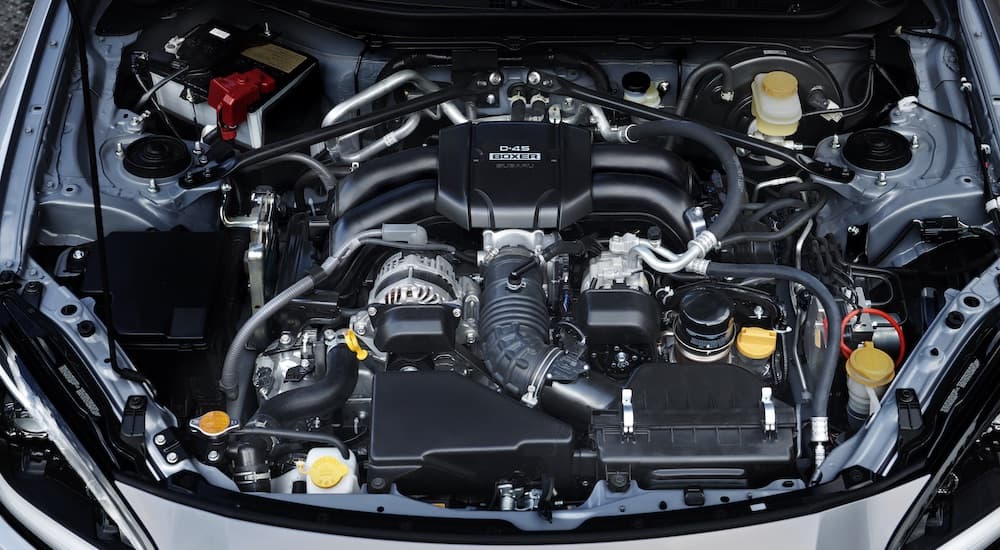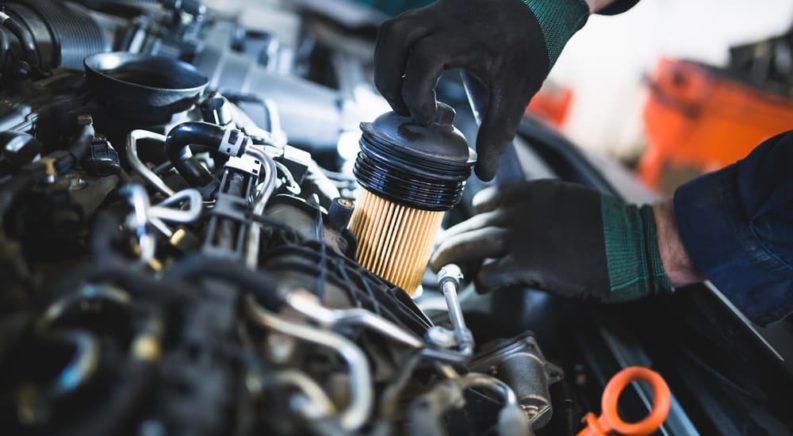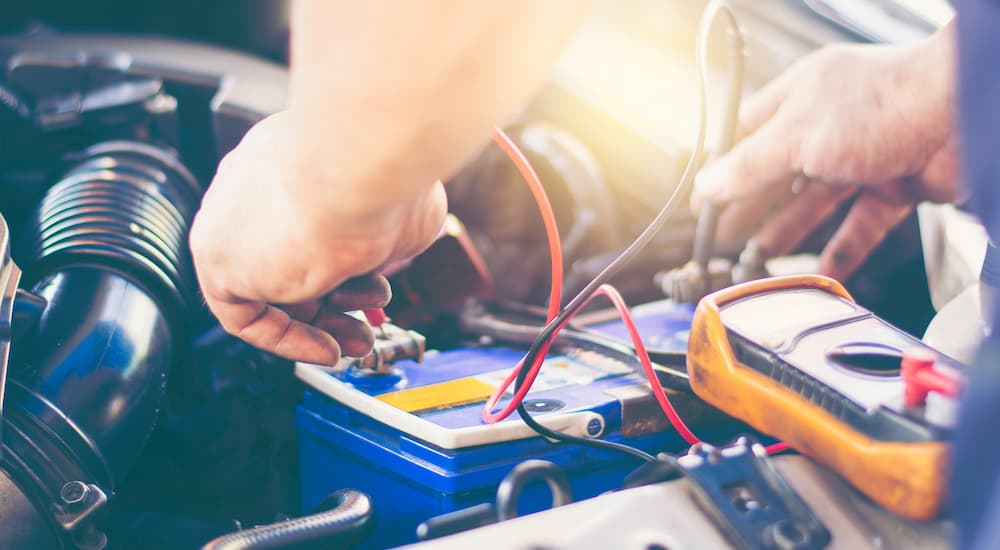Today’s cars, trucks, and SUVs are marvels of modern engineering, but that doesn’t mean they don’t need a little TLC from time to time. While no one is asking you to switch to premium fuel or detail the wheels with a toothbrush, there are a few simple maintenance tasks that can go a long way in keeping your vehicle on the road. Not only will these types of chores reduce the likelihood of a major breakdown, but they’ll also allow your vehicle to better retain its value, an important factor should you ever decide to sell. In this guide, we’re going to skip over some of the most basic car maintenance tips, like changing your oil or checking your tire pressure, because these just represent the bare minimum of basic vehicle care. Rather, we’ll look at some of the less-common car care tips that can go a long way in improving the performance, safety, and value of your vehicle.
Change Filters
Changing your fluids without changing the corresponding filter is like showering and then getting back into the same dirty clothes. Clogged, dirty filters prevent various components from working at their best and can have a noticeable effect on performance, air quality, and more. Most vehicles feature a variety of filters that include a fuel filter, oil filter, cabin air filter, and engine air filter. The latter is one of the most important as it plays a major role in ensuring that clean, oxygen-rich air is able to make its way to your engine’s internal combustion chambers.
If the engine air filter becomes clogged, performance will take a noticeable hit, with decreased fuel economy and acceleration serving as two leading signs. This problem is especially pronounced for drivers who regularly find themselves navigating dense traffic or dusty off-road conditions, so consider accelerating your engine air filter maintenance schedule if this is the case. The engine air filter is easy to inspect and is usually located in a plastic box under the hood secured by some simple fasteners. Open the box and do a visual inspection of the filter, keeping an eye out for any obvious clogs or gray and black discoloration.
Oil filters are just as important, straining dirt and metallic particles from the motor oil before it can turn into engine-clogging sludge. If too much of this sludge builds up, the engine can overheat, which can result in a cracked engine block, blown head gasket, or any number of costly repairs. If you find yourself thinking, “but I’ve never seen an oil filter in my life and my vehicle runs just fine,” there’s a good reason for that. Oil filters are typically replaced as part of every oil change, meaning drivers who don’t change their own oil might never actually set their hands on one.
Oil filters should be replaced every 3,000 miles, or at every oil change, while cabin and engine air filters can be expected to perform for between 15,000 and 20,000 miles. The fuel filter is the longest-lasting of the bunch, only requiring a replacement every two years or 30,000 miles.
Waxing
While waxing a vehicle might just seem like something your dad did in order to spend more time in the garage, it actually plays an important role in protecting your vehicle from corrosive elements. Sure, wax does a great job of giving your vehicle a nice shine, but its real purpose is to create a water-resistant “hydrophobic” layer between the paint job and the outside forces seeking to destroy it. From rocks and other debris to rain laden with chemicals and pollutants, wax provides an extra layer of protection and resists corrosion with its unique water-beading properties.
For most drivers, waxing is particularly important in the warmer months when strong UV rays and acidic bird droppings are out in full force. Those who live in cold-weather areas can’t really let their guard down at any time of year, with salty road slush presenting its own set of dangers.
Aside from offering protection, wax can also save you time and money by reducing how frequently you’ll need to wash your car due to the fact that dirt and grime have a difficult time adhering to wax. Waxing doesn’t take the place of car washes, which should still be performed regularly, but it does add another layer of protection. Most importantly, it’ll keep your vehicle looking its best for a long time to come. This can make all the difference come resale time, when a fresh, clean exterior can go a long way in enhancing a buyer’s confidence. Waxing schedules depend on a variety of conditions, but as a general rule of thumb, the task should be performed twice a year at a minimum if a vehicle is kept in a garage or otherwise protected, and every 3 to 4 months if the vehicle is not protected and regularly exposed to the elements.
Inspect Battery
Many drivers plop a new battery into a vehicle and then don’t think about it again until that cold January morning when the car fails to start, but with a little maintenance, it’s easy to extend the life of your battery. Get in the habit of regularly inspecting your battery, keeping a close eye out for any white or bluish powder on the positive and negative terminals. This is called corrosion and can quickly spiral out of control if not properly dealt with, resulting in difficult starts or even a cracked battery.
It’s easy enough to remove; simply take a cheap wire brush and some corrosion removal fluid and scrub away at the caked-on powder, starting with the negative terminals, until both battery terminals are gleaming. If you don’t want to spring for the commercial corrosion removal fluid, a simple mixture of baking soda and water will work almost as well. Once the terminals are clean, lightly rinse them with water, dry them off with a rag and reconnect the battery starting with the positive terminal.
Many of today’s vehicles feature battery level indicators that will tell you when your battery is starting to lose its juice, and for those without one, standalone battery testers and multimeters serve the same purpose. Just remember that performance can be affected by a variety of factors, including low temperatures. Even if a battery appears to be in decent shape, a particularly cold night out in the driveway can mean a tough start the next morning.
If your battery seems to have difficulty holding a charge, there’s one step you can take before swapping it out for a new unit. Available for as little as $20, battery reconditioners/desulfators rid the battery of built-up sulfates, breathing new life into old, worn-out batteries. They won’t do the trick in every case, but given their relatively low price, there’s a sensible investment for any DIY mechanic who’s trying to squeeze a little more life out of their battery.
Replace Wiper Blades
Proper visibility is an important part of safe driving, and few components have a more dramatic effect on visibility than your wiper blades. While wiper blades don’t typically get as much attention as many other basic maintenance tasks, they’re easily one of the cheaper and least-intimidating items on the checklist. While schedules vary by weather and vehicle usage, it’s generally recommended to replace your wipers every three to six months.
If you’ve lost track of the last time the chore was undertaken, there are a few common signs to keep an eye out for. Failing wiper blades tend to skip across the glass, leave streaks, and make loud squeaking noises. Sometimes this can be due to there being too little water on the windshield or having the wiper frequency set too high, but if these signs start to appear at various speeds and in varying amounts of rainfall, a trip to your local auto parts store might be in order. Even if your wipers aren’t showing any signs of wear, make a habit of regularly inspecting them for dirt, rocks, vegetation, or any other debris that can scratch your windshield when the blades are in operation.
Finding an appropriate set of replacement wipers is as easy as checking your owner’s manual or doing a quick web search, although many retailers will also have a handy guide in the wiper aisle that allows you to look up which blades you’ll need based on your specific make, model, and year. Just make sure to differentiate between the driver and passenger-side wipers, as one is typically longer than the other. They’ll probably cost around $25 to $40 for a pair (though there are definitely more expensive options) and can be installed in less than five minutes without any specialized tools in many cases. While you’re at the auto parts store, you might as well pick up a backup set to throw in the trunk since a wiper malfunction in a rain or snow storm can result in a long spell in the breakdown lane while you wait for the weather to pass.

Inspect and Replace Belts
Those who didn’t grow up with their head beneath the hood of a car might be surprised to learn just how much work is performed by a few inconspicuous rubber belts. When a vehicle’s crankshaft spins, it doesn’t just send power to the wheels but also to a number of belts, including the timing belt, power steering belt, serpentine belt, and AC compressor belt. Some of these are more important than others, but a break in any of them can result in dramatically reduced or nonexistent performance. The timing belt, which is responsible for the proper synchronization of your engine’s valves, is particularly important. A broken timing belt can spell disaster for an engine, which can quickly destroy itself when valve timing is compromised, requiring a full rebuild.
It’s important to catch worn-out belts before they snap, which can result in serious and long-lasting damage to vital engine components. Thankfully in most cases, it’s as easy as keeping an ear to the ground, or hood, as worn belts tend to make a distinctive squeaking noise. If you detect this noise, pop the hood and locate the offending belt, inspecting it for any obvious cracks or wear. Of course, the best practice is not to wait until a problem arises to give your belts a once-over, so make a quick belt inspection part of your regular oil change routine.
Many of the belts found under the hood have a service life of between 50,000 to 100,000 miles, though it varies depending on the belt. Timing belts should be replaced every 60,000 miles, while serpentine belts wear out a little faster, requiring replacement every 40,000 miles. Thankfully these belts are relatively affordable to replace, costing between $50 and $100, though the bill can quickly add up due to labor costs. While belt replacement was once best left to the pros, aspiring DIYers can now try their hand at the task thanks to the automatic belt tensioners found in many newer vehicles, which makes the job much easier for a relative layman.
Keep Up With the Small Things to Avoid Bigger Problems
You might not be ready to step into a NASCAR pit anytime soon, but these simple car care tips are a good place to start. Proper maintenance not only allows drivers to head off potentially costly and catastrophic automotive issues but also helps you gain a greater understanding of what’s going on under the hood. As you start to build up your library of automotive knowledge through these simple maintenance tasks, you’ll see how these little tasks can make all the difference in helping your vehicle to achieve peak performance and retain its value.
While some of these chores might fall out of your comfort zone initially, just start with something small and build up your confidence, and toolbox, until you’re ready to tackle whatever your vehicle can throw at you. Eventually, you’ll be better able to identify small warning signs before they become major problems and save yourself some serious time and money that would otherwise be spent having a mechanic track down mysterious symptoms.


